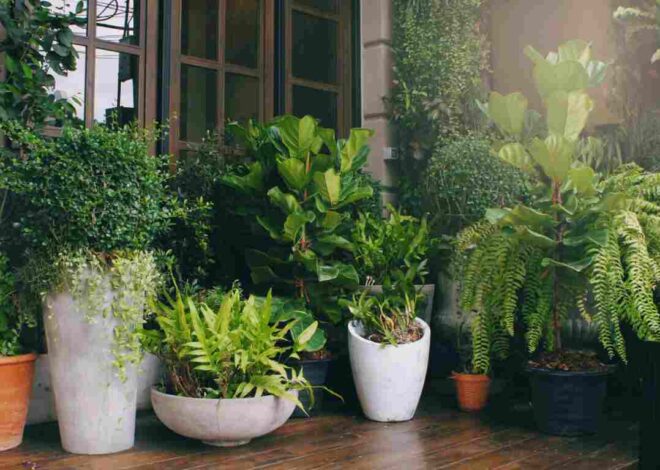
Hydroponic Gardening Guide: What is Hydroponic Gardening and How Does it Work
Have you ever dreamed of growing your own fresh produce but lacked the space or suitable soil? Well, look no further! In this comprehensive guide, we will delve into the fascinating world of hydroponic gardening. With its soilless method of cultivation, hydroponic gardening offers an innovative solution for urban dwellers, plant enthusiasts, and anyone seeking to grow their own food. Join us as we explore the ins and outs of hydroponic gardening, from its intriguing history to the practicalities of setting up your own system. Get ready to unlock the secrets of soil-free gardening and embark on an exciting journey of sustainable cultivation!
What is Hydroponic Gardening?
Definition: Define hydroponic gardening and its differences from traditional soil-based gardening
Hydroponic gardening is a revolutionary technique that allows plants to grow without soil, using nutrient-rich solutions instead. Unlike traditional soil-based gardening, which relies on the natural fertility of the soil, hydroponic systems provide all the necessary nutrients directly to the plant’s roots. This precise delivery of nutrients ensures optimal growth, resulting in higher yields and faster plant development.
History
Provide a brief history of hydroponic gardening and its evolution
The concept of hydroponic gardening is not new. In fact, its origins can be traced back to ancient civilizations such as the Hanging Gardens of Babylon and the Aztec floating gardens. However, it was not until the 19th century that modern hydroponics began to take shape. In 1860, German botanist Julius von Sachs conducted groundbreaking research on plant nutrition, paving the way for future advancements in hydroponics. Since then, hydroponic gardening has evolved and gained popularity, especially in areas with limited arable land or unfavorable soil conditions.
Benefits
Discuss the advantages of hydroponic gardening, including increased yields, water conservation, and reduced land use
Hydroponic gardening offers a multitude of benefits that make it an attractive alternative to traditional gardening methods. Firstly, hydroponic systems allow for significantly increased yields compared to soil-based cultivation. By providing plants with precise amounts of nutrients, water, and oxygen, hydroponics creates an optimal growing environment, resulting in faster growth and larger harvests.
Another notable advantage of hydroponic gardening is its water-saving capabilities. Unlike traditional gardening, where water can be lost through evaporation or runoff, hydroponic systems recirculate water, reducing water consumption by up to 90%. This makes hydroponic gardening an environmentally friendly choice, particularly in regions facing water scarcity.
Furthermore, hydroponics requires less land compared to conventional farming methods. By growing plants vertically or in compact systems, hydroponic gardens can maximize space utilization, making it ideal for urban environments or areas with limited land availability.
Types of Hydroponic Systems
Explain the different types of hydroponic systems, such as NFT, DWC, and Ebb and Flow
Hydroponic gardening encompasses various systems, each with its own unique characteristics and advantages. Let’s explore some of the most common types:
- Nutrient Film Technique (NFT): In NFT systems, a thin film of nutrient-rich water continuously flows over the plant’s roots, providing a constant supply of nutrients. This method is especially suitable for small plants with shallow root systems.
- Deep Water Culture (DWC): DWC systems suspend plants in nutrient-rich water, allowing the roots to absorb oxygen and nutrients directly. This method is popular for growing leafy greens and herbs.
- Ebb and Flow: Also known as flood and drain systems, ebb and flow systems periodically flood the growing tray with nutrient solution before draining it away. This cycle ensures proper nutrient absorption and oxygenation for the plants.
These are just a few examples of the many hydroponic systems available. Each system has its own advantages and considerations, so it’s important to choose one that suits your needs and available space.
How Does Hydroponic Gardening Work?
Nutrient Solution: Explain the role of nutrient solutions in hydroponic gardening and how they provide essential nutrients to plants
In hydroponic gardening, nutrient solutions play a crucial role in providing plants with the essential elements they need to thrive. These solutions are carefully formulated to meet the specific nutritional requirements of different plants. By dissolving the necessary nutrients in water, the solution is easily absorbed by the plant’s roots, promoting healthy growth and development.
Root System: Discuss the unique root system of hydroponic plants and how it adapts to the nutrient-rich solution
One of the remarkable aspects of hydroponic gardening is the unique root system that develops in these soilless environments. In hydroponic systems, plant roots are exposed to oxygen and nutrient-rich solutions, allowing them to grow more rapidly and efficiently. Without the need to search for nutrients in the soil, hydroponic plants can focus their energy on above-ground growth, resulting in lush foliage and bountiful harvests.
Plant Growth: Describe the process of plant growth in hydroponic systems, including photosynthesis and nutrient uptake
In hydroponic gardening, the process of plant growth follows the same fundamental principles as traditional gardening. Through the process of photosynthesis, plants convert light energy into chemical energy, enabling them to synthesize sugars and other essential compounds. In hydroponic systems, plants absorb nutrients directly from the nutrient solution, bypassing the need for soil-based nutrient uptake. This streamlined process allows plants to allocate more energy towards growth and development, resulting in accelerated growth rates.
Water Conservation: Highlight the water-saving benefits of hydroponic gardening and its potential to address global water scarcity
Water scarcity is a pressing global issue, making water conservation a top priority in agriculture. Hydroponic gardening excels in this regard, as it requires significantly less water compared to traditional farming methods. By recirculating water and minimizing water loss through evaporation or runoff, hydroponic systems can save vast amounts of water. This makes hydroponic gardening an attractive option, particularly in regions facing water shortages or drought conditions.
Pest Control: Discuss the reduced need for pesticides and other chemicals in hydroponic gardening
Another advantage of hydroponic gardening is the reduced reliance on pesticides and other chemical treatments. In soil-based gardening, pests and diseases can easily spread through the soil, requiring frequent pesticide application. In hydroponic systems, the absence of soil eliminates many common pests and diseases, reducing the need for chemical intervention. This not only benefits the environment but also ensures that your produce is free from harmful residues.
Setting Up a Hydroponic Garden
Choosing a System: Explain the factors to consider when selecting a hydroponic system, including space, budget, and desired crop
When embarking on your hydroponic gardening journey, choosing the right system is crucial. Several factors should be considered, such as available space, budget, and the type of crops you wish to grow. Some systems are better suited for small spaces, while others require more room to accommodate larger plants. Additionally, certain crops have specific environmental requirements, so it’s essential to select a system that can provide the ideal conditions for your chosen plants.
Materials Needed: List the essential materials required for setting up a hydroponic garden, including a system, nutrients, and lighting
Setting up a hydroponic garden requires a few essential materials to ensure success. Here’s a list of the most crucial items you’ll need:
- Hydroponic System: Choose a system that suits your space and crop requirements. This could be an NFT system, a DWC setup, or any other type of hydroponic system.
- Nutrient Solution: Purchase a nutrient solution specifically formulated for hydroponic gardening. These solutions contain all the necessary elements to promote healthy plant growth.
- Lighting: Since hydroponic systems are often used indoors or in areas with limited natural light, artificial lighting is essential. LED grow lights are a popular choice for their energy efficiency and ability to provide the right spectrum of light for plant growth.
- Growing Medium: Depending on the system you choose, you may need a growing medium to support the plant’s roots. Options include rockwool, coconut coir, perlite, or clay pellets.
Setup and Maintenance: Provide step-by-step instructions for setting up and maintaining a hydroponic garden, including pH testing and nutrient adjustments
Setting up and maintaining a hydroponic garden requires some initial effort but can be immensely rewarding. Follow these steps to get started:
- Set up the hydroponic system according to the manufacturer’s instructions, ensuring proper water flow and stability.
- Mix the nutrient solution according to the recommended dilution rate and adjust the pH level to the optimal range for your plants. Regularly test and adjust the pH as needed.
- Place the plants or seedlings into the growing medium and position them in the system, ensuring the roots are in contact with the nutrient solution.
- Install the appropriate lighting system, positioning the lights at the optimal distance from the plants to provide sufficient light intensity.
- Monitor the water level and nutrient concentration regularly, adjusting as necessary to maintain optimal growing conditions.
- Check for pests and diseases regularly, and take appropriate measures if any issues arise. Remember, hydroponic systems are generally less prone to pest infestations, but it’s still essential to remain vigilant.
Challenges and Limitations
Common Issues: Discuss common challenges faced by hydroponic gardeners, such as pH imbalances and nutrient deficiencies
While hydroponic gardening offers numerous advantages, it does come with its own set of challenges. pH imbalances can occur if the nutrient solution’s pH drifts too high or too low, affecting nutrient availability to the plants. Regular testing and adjustment of the pH level are necessary to maintain optimal growing conditions.
Another common challenge is nutrient deficiencies, which can arise if the nutrient solution lacks essential elements. Regular


